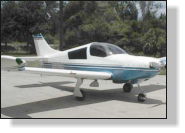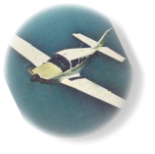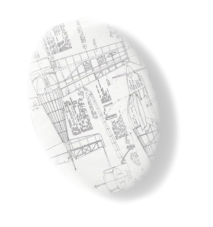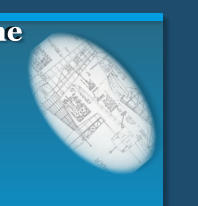


The Development of the the SA102.5 Cavalier & Other Cavalier Models
Some Notes from the Designer - Mr Stan McLeod (April 2004)
SA102, SA102.5, SA103, SA104 Cavaliers and SA105 Super
Cavalier
The Cavalier started life as the SA102 Cavalier and the
prototype; built by Forest Fenton of Calgary, flew with
135 hp Lyc in 1963. This was a fairly basic machine by
present day standards but was the aircraft that proved
the "Rod Nose Gear" could be made to work (others had tried and failed). The
original prototype just plain wore out, was rebuilt and I believe still exists. Could
use engines from 85 to 135hp, could be built as tri gear or tail dragger and was
easily convertible from one to the other.
NOTE: the tail dragger turned out to be around 15 mph SLOWER than the tri gear
and didn't handle rough fields any better than the tri gear; however both offered
excellent handling on the ground. Some builders demanded retractable gear for
the Cavalier and this was not practical so I spent some 4-5000 hrs designing a
new airplane with retractable gear - the SA105 Super Cavalier.
This is a very informative article by Simon Bugg.-
Although the Cavalier SA 102 and 102.5 are no longer offered this is a great
article about where our currently offered Cavaliers came from.
The original inspiration for the SA102.5 Cavalier was the GY-20 Minicab.
The GY-20 Minicab is a small side by side, two seat monoplane originally
conceived in France by Yves Gardan. It is constructed of wood with a fabric skin
originally powered by a 65HP Continental engine. The prototype first flew in 1949.
Eventually, the plans were translated from French to English and made available
for amateur builders.
Cavalier SA102.5
The SA102.5 Cavalier is a much modified and refined development of the GY-20
Minicab. It is in the same French tradition, as the Jodels, the Emeraudes, and
other fine wooden aircraft from Europe, but designed in Western Canada by Stan
McLeod. The first flight of the prototype SA 102 was made in 1964 and
subsequent development (such as the addition of tip tanks) lead to the first flight
of the SA 102.5 in February 1971.
Basically, a SA102.5 Cavalier is a two-seat (side by side) cantilever low-wing
monoplane. The wing section is a NACA 23015 at the root and NACA 23012 at the
tip. The wing structure consists of a single wooden box spar, plywood leading
edge, and an auxiliary rear spar to carry the flaps and ailerons. The centre
section and leading edge of the wing is plywood covered, the remainder covered
with fabric. The fuselage is a wooden truss type structure of spruce and birch ply
construction. The cockpit doors and canopy are of fibreglass. The rear decking is
fabric covered as are the control surfaces. The standard aircraft has a fixed
tricycle under-carriage with spring steel gear legs. Fuel is carried in wing tip
tanks of up to 22 Imperial gallons capacity. Engine options range from 85 hp to
135 hp.
The Cavalier was designed to:
- be build-able by amateur builders
- be affordable to build and operate
- be serviceable and easily maintained
- be a reasonable performer on 100 to 135 hp
- to operate well off 2500 ft grass strips
- to operate safely from high density altitude airports
- be safe for the "low time" pilot who has not flown for 10 years
- be an overall attractive and safe aircraft
...the Cavalier is not a race plane and was never intended to be.












The Development of the the SA102.5 Cavalier & Other Cavalier Models
Some Notes from the Designer - Mr Stan McLeod (April 2004)
SA102, SA102.5, SA103, SA104 Cavaliers and SA105 Super Cavalier
The Cavalier started life as the SA102 Cavalier and the prototype; built by Forest
Fenton of Calgary, flew with 135 hp Lyc in 1963. This was a fairly basic machine by
present day standards but was the aircraft that proved the "Rod Nose Gear"
could be made to work (others had tried and failed). The original prototype just
plain wore out, was rebuilt and I believe still exists. Could use engines from 85 to
135hp, could be built as tri gear or tail dragger and was easily convertible from
one to the other.
NOTE: the tail dragger turned out to be around 15 mph SLOWER than the tri gear
and didn't handle rough fields any better than the tri gear; however both offered
excellent handling on the ground. Some builders demanded retractable gear for
the Cavalier and this was not practical so I spent some 4-5000 hrs designing a
new airplane with retractable gear - the SA105 Super Cavalier.
This is a very informative article by Simon Bugg.-
Although the Cavalier SA 102 and 102.5 are no longer offered this is a great
article about where our currently offered Cavaliers came from.
The original inspiration for the SA102.5 Cavalier was the GY-20 Minicab.
The GY-20 Minicab is a small side by side, two seat monoplane originally
conceived in France by Yves Gardan. It is constructed of wood with a fabric skin
originally powered by a 65HP Continental engine. The prototype first flew in 1949.
Eventually, the plans were translated from French to English and made available
for amateur builders.
Cavalier SA102.5
The SA102.5 Cavalier is a much modified and refined development of the GY-20
Minicab. It is in the same French tradition, as the Jodels, the Emeraudes, and
other fine wooden aircraft from Europe, but designed in Western Canada by Stan
McLeod. The first flight of the prototype SA 102 was made in 1964 and
subsequent development (such as the addition of tip tanks) lead to the first flight
of the SA 102.5 in February 1971.
Basically, a SA102.5 Cavalier is a two-seat (side by side) cantilever low-wing
monoplane. The wing section is a NACA 23015 at the root and NACA 23012 at the
tip. The wing structure consists of a single wooden box spar, plywood leading
edge, and an auxiliary rear spar to carry the flaps and ailerons. The centre
section and leading edge of the wing is plywood covered, the remainder covered
with fabric. The fuselage is a wooden truss type structure of spruce and birch ply
construction. The cockpit doors and canopy are of fibreglass. The rear decking is
fabric covered as are the control surfaces. The standard aircraft has a fixed
tricycle under-carriage with spring steel gear legs. Fuel is carried in wing tip
tanks of up to 22 Imperial gallons capacity. Engine options range from 85 hp to
135 hp.
The Cavalier was designed to:
- be build-able by amateur builders
- be affordable to build and operate
- be serviceable and easily maintained
- be a reasonable performer on 100 to 135 hp
- to operate well off 2500 ft grass strips
- to operate safely from high density altitude airports
- be safe for the "low time" pilot who has not flown for 10 years
- be an overall attractive and safe aircraft
...the Cavalier is not a race plane and was never intended to be.
















